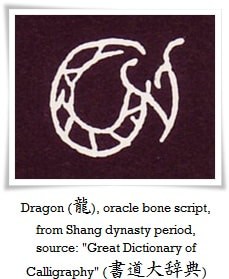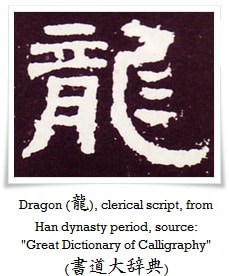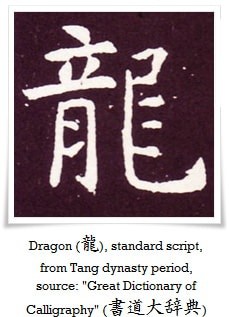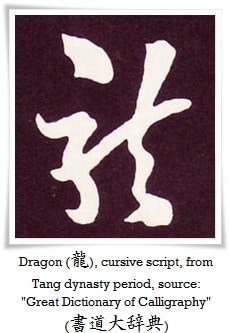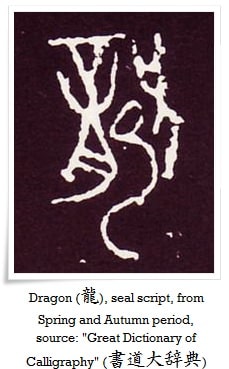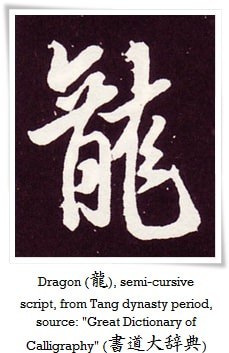In Chinese calligraphy we can distinguish five core styles:
- Seal script (篆書, tensho, further divided into great seal andsmall seal scripts)
- Clerical script (隷書, reisho)
- Cursive script(草書, sousho)
- Regular script (楷書, kaisho)
- Semi-cursive script (行書, gyousho)
These do not entirely define the borders of calligraphy, as there are none to it. Each of the scripts includes numerous sub styles, some of which were created by famous calligraphers, while others by the natural evolution of the written language.
Some forms of writing are more of a style than a separate script as they can be applied with either of the styles. A good example would be flying white (飛白, kasuri) whose development is accredited to Cai Yong (蔡邕, 132–192), a great calligrapher and artist of Eastern Han dynasty (東漢, 25 C.E. – 220 C.E.).
Others are rather troublesome to classify. For instance, oracle bone script, (甲骨文, koukotsubun) until recently considered to be the forefather of all styles, in some literature is treated as predecessor of great seal script (大篆, daiten), where other refers to it as part of it, alongside with kinbun (金文, “text on metal”).
Although major styles have developed and matured in China, we can distinguish styles characteristic to specific countries. Japan for example, had a vast influence on the evolution of sho. After adopting the Chinese writing system, it was used for completely different linguistics and aesthetics. The Japanese then created a breath-taking style called kana (かな), which perfectly matches their unique needs and aesthetics.
Zen monk writing known as bokuseki (墨蹟,“traces of ink”) and avant-garde calligraphy (前衛書道, zenei shodou) were also initiated in Japan. Today, not only Chinese calligraphers but also western abstract painters are deeply influenced by both of those trends.
Some other scripts were discovered only recently. Until the 1980’s, no one knew of a mysterious syllabary called nushu (女書, lit. “woman’s writing”), created by women of the Jiangyong County (江永縣) of Henan Province (河南). It appears that its history reaches back 2000 years, and the script was kept secret, concealed in craft items, diaries and traditional folk songs.
It is important to stress that a style of calligraphy (書体, shotai) should not be mistaken with one’s personal handwriting (書風, shofuu). There are as many handwriting styles as there are calligraphers, and even though some of the handwriting of famous artists became models for others to follow, it does not mean that handwriting is automatically a separate style. In other words, whether it is seal script, clerical script or any other style, it can be written in as many ways as there are calligraphers (given that established rules are followed).

